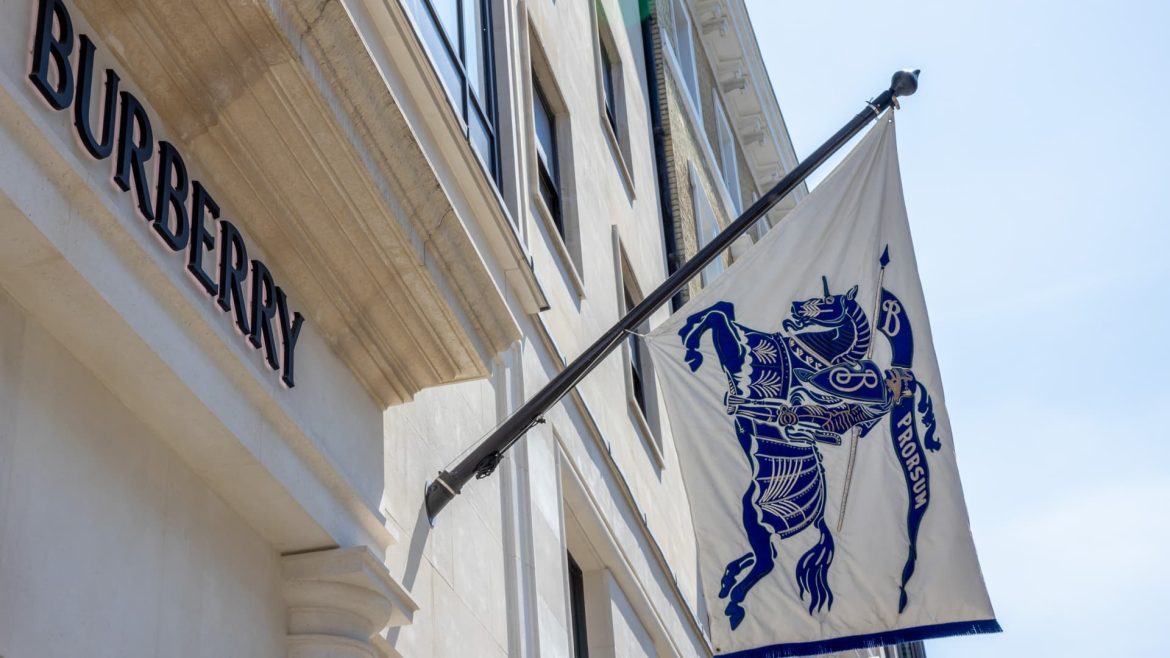The State of Luxury Fashion: A Comparative Analysis of Gucci and Burberry
The luxury fashion industry is currently navigating a challenging landscape, with two of its most iconic brands, Gucci and Burberry, facing significant headwinds. Both brands have reported declines in sales, albeit for different reasons, and are implementing various strategies to turn their fortunes around.
Gucci: A Slump in Sales
Gucci, the French luxury brand, has seen a notable decline in sales. According to recent reports, Gucci’s sales fell by 24% in the October-December period, contributing to a 12% overall drop in sales for the group. This significant decrease highlights the challenges Gucci is facing in maintaining its market position and appealing to its customer base.
Burberry: A Turnaround in Progress
Burberry, on the other hand, has also been struggling with sales declines, but the brand is taking proactive steps to address the issue. The company announced a series of organizational changes and a strategic turnaround plan, “Burberry Forward,” under the leadership of its new CEO, Joshua Schulman. This plan focuses on revitalizing the brand’s core strengths, particularly in outerwear, and diversifying its pricing structure.
Market Dynamics and Consumer Behavior
The luxury market has been experiencing a slowdown, with global luxury sales dropping by 1% to €1.48 trillion in 2024. This decline is reflected in the performance of both Gucci and Burberry, indicating broader market trends that are affecting luxury brands worldwide. Consumer behavior is shifting, with a growing emphasis on value for money and sustainability, which luxury brands are struggling to adapt to.
Strategic Initiatives and Turnaround Plans
Burberry’s turnaround plan, “Burberry Forward,” is a comprehensive strategy aimed at revitalizing the brand. The plan includes a focus on outerwear, a more diversified pricing structure, and a renewed emphasis on the brand’s heritage and innovation. The company has also launched cost-cutting measures, including a £40 million program, to streamline operations and improve profitability. Burberry’s recent campaigns, such as the “It’s Always Burberry Weather” and “Wrapped in Burberry” initiatives, have resonated with luxury customers, leading to an improvement in brand desirability and strength in outerwear and scarves.
Market Response and Investor Sentiment
Despite the challenges, there are signs of stabilization in consumer demand, particularly in key markets like China and the United States. Burberry’s shares have surged in response to better-than-expected sales figures, raising investor hopes for a luxury market recovery. The brand’s focus on core products like trench coats and scarves has been well-received, indicating a potential path to recovery.
The Road Ahead
The luxury fashion industry is at a crossroads, with brands like Gucci and Burberry facing significant challenges. However, the proactive steps taken by Burberry, including its strategic turnaround plan and cost-cutting measures, offer a glimmer of hope. The focus on heritage, innovation, and core strengths, along with a diversified pricing structure, could pave the way for a successful turnaround. Gucci, meanwhile, will need to adapt its strategies to address the declining sales and maintain its market position.
Conclusion: A Glimpse into the Future
The luxury fashion industry is undergoing a transformation, driven by changing consumer behavior and market dynamics. Brands like Gucci and Burberry are at the forefront of this change, implementing strategic initiatives to navigate the challenges and position themselves for future growth. While the road ahead is uncertain, the proactive steps taken by these brands offer a glimpse into a future where heritage, innovation, and adaptability will be key to success. The luxury market is evolving, and brands that can pivot and adapt to these changes will emerge stronger and more resilient.


